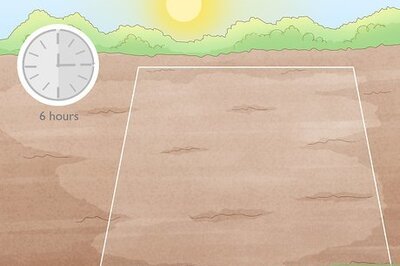
views
BHUBANESWAR: A whopping 8.83 lakh birds were sighted at Chilika lagoon this winter. Their number which has witnessed a healthy rise has pleased the naturalists and wildlife officials.Last year, the bird count had put their number at 8.04 lakh which means about 79,000 more water fowls were seen at the 1,100 sq km brackish water lagoon.According to Chilika Wildlife Sanctuary DFO BK Acharya, a total of 167 species of birds were sighted during the two-day estimation. As many as 106 of them were migratory species whose number stood at 8.68 lakh. Gadwals were the most dominant species in the lagoon, their population estimated at 1.87 lakh.One of the highlights of the current year’s water fowls was the appearance of Glossy Ibis. A wader, Glossy Ibis is seen in warm regions of Europe, Asia, Africa, Australia, and Atlantic and Caribbean regions of America.Acharya said, it was spotted for the first time. “Initially when a census team member Chandan reported it, we did not take his word on face value but he came up with photographic evidence. There were at least 980 of them in Mangalajodi area of the lagoon,” the DFO said.The number of flamingoes, however, saw a drop this winter. The census teams spotted just two dozens (26 to be precise) of these long-legged waders. Last year, there were 200 of them.Even as the overall number of birds arriving at Chilika saw an increase, in the 15.5-sq-km Nalabana Bird Sanctuary, there was a drop in the winged visitors. Of the 8.83 lakh, at least 3.18 lakh birds were enumerated in Nalabana. Last year’s enumeration had the number at 3.82 lakh.“This could be because of the fact that the mud flats went dry following a drop in the water level which converted the roosting areas into grasslands,” the DFO said. Most of this occurred near the watchtower number 1 in the submersible island. About 10 hectare of the mud flats became grasslands because of the dipping water levels.




















Comments
0 comment